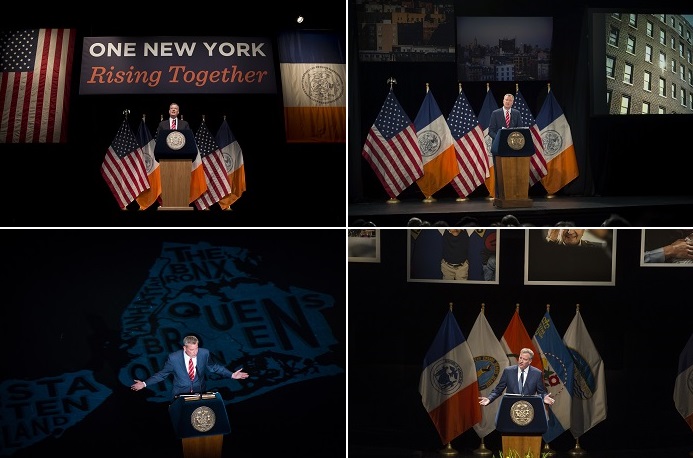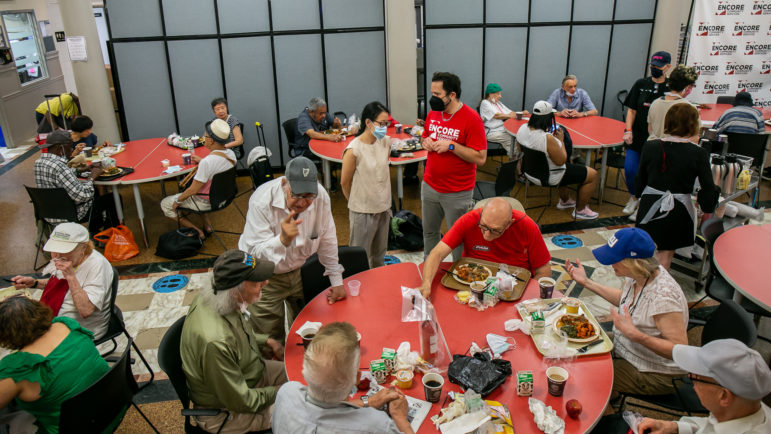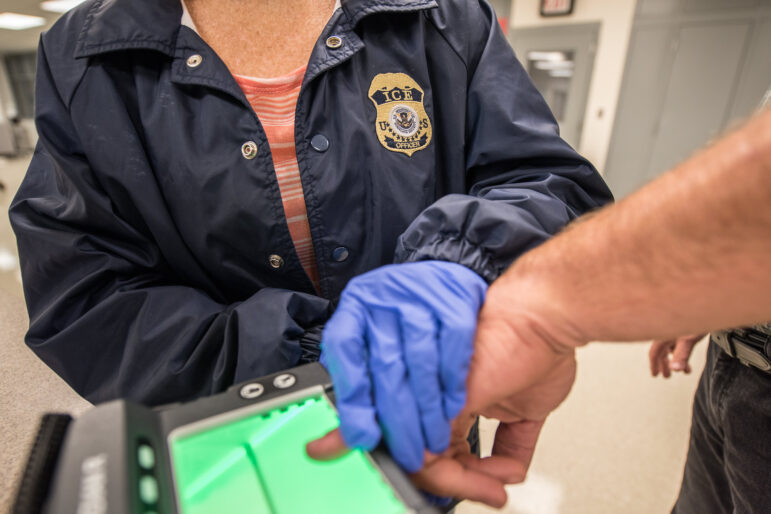
Mayoral Photography Office
The mayor delivering his state of the city in (clockwise from upper left) 2014, 2015, 2016 and 2017.
Homelessness has been mentioned six times over the four years. Pre-K has garnered 11 mentions over the same period. The mansion tax is one idea that made it into the speech but not into reality. But NYCID made it from the speech into hundreds of thousands of New Yorkers’ pockets. A higher minimum wage eventually became law. But the BQX streetcar? The jury is still out.
On Tuesday night Mayor de Blasio delivers his fifth state of the city address at 7 p.m. from the Kings Theater in Brooklyn. (It will be livestreamed at nyc.gov.)
A review of the mayor’s four previous annual addresses finds ideas that lived and others that died, common themes and changes of emphasis. In early 2014, de Blasio lambasted the “gridlock” in Washington, but by 2017 he stressed the need to protect the city from what might happen in the nation’s capitol. The mayor’s first annual speech mentioned inequality five times, but his most recent one only used the word once.
Below are the transcripts, videos and key highights from each of the mayor’s state of the city addresses so far.
February 10, 2014
Excerpt:
“And above all, we will give a fair shot to those who deserve it most – our children—all of them. We will offer every child, from every borough of this city, truly universal, full-day Pre-K. We will provide quality extended learning programs for every middle-schooler. And for this, we won’t wait. We have a detailed plan to put this program into effect this September.”
And we will do this by asking those who make more than a half-million dollars a year to pay a little more in taxes. “
…
There are some who say that Albany shouldn’t approve our plan because the state government simply cannot raise any taxes right now. But that is not the debate. We’re not asking Albany to raise the state income tax by a penny to pay for universal Pre-K and after-school programs here in New York City. We’re simply asking Albany to allow New York City to tax itself—its wealthiest residents…those making a half-million or more a year.”
Raising taxes on the rich makes our commitment to our kids more than just words. It makes that commitment real. It makes that commitment fair. And it offers a promise to our kids that they can count on.”
February 3, 2015
Excerpt:
“While the state of our city is strong, we face a profound challenge. If we fail to be a city for everyone, we risk losing what makes New York … New York. And nothing more clearly expresses the inequality gap … the opportunity gap…than the soaring cost of housing. The math is pretty straightforward. In 2014, 56 percent of rental households in New York were spending more than 30 percent of their income on housing – up 10 points in a little more than a decade.
Now spending more than 30 percent of your income on housing means you’re officially ‘rent-burdened.’ That’s an apt description, since the cost of living is becoming a heavier and heavier burden — not just on wallets, but on hopes and aspirations, as well.”
So how did we end up here? Part of the problem is that the city has for decades let developers write their own rules when it came to building housing. Sometimes projects included affordable housing … but far too often, they did not. As the city expanded, our growth was guided primarily by the developers’ bottom lines.”
… This administration is taking a fundamentally different approach – one that not only recognizes the need for more affordable housing…but demands it. How will we do this?”
First, we’re writing new rules … ones that mandate affordable housing as a condition of development in areas rezoned for residential use. Second, we’ll do everything in our power to keep those who already have affordable housing in their homes. And third — since we only have so much land — we’ll create more affordable housing by literally building up … adding density to appropriate parts of our city.”
We are not embarking on a mission to build towering skyscrapers where they don’t belong. …[T]here are some places in our city that have not yet been developed or zoned for housing, but could be. And by taking steps like adding residential buildings to former manufacturing sites — or adding some six to eight story buildings in appropriate places — we could make a fundamental difference in neighborhoods’ affordability. That means families staying and thriving in the neighborhoods they love, instead of being priced out.”
February 4, 2016
Excerpt:
“Today we take the next great step in connecting New Yorkers to the heart of our New Economy for New York. We’re now seeing explosive growth on the waterfront in Brooklyn and Queens. The neighborhoods that run along the East River from northern Queens to Sunset Park are home to over 400,000 people, including over 40,000 NYCHA residents; and major employment hubs like Downtown Brooklyn, the Navy Yard, and the Sunset Park industrial cluster.
So tonight I am announcing the Brooklyn-Queens Connector, or BQX, a state-of-the-art streetcar that will run from Astoria to Sunset Park, and has the potential to generate over $25 billion of economic impact for our city over 30 years. New Yorkers will be able to travel up and down a 16-mile route that links a dozen waterfront neighborhoods. The BQX has the potential to change the lives of hundreds of thousands of New Yorkers.”
February 13, 2017
Excerpt:
“Our goal over the next 10 years is to create 100,000 more permanent good paying jobs in New York City. 100,000 jobs for New Yorkers. That alone will reach 250,000 people, meaning all the people work and their family, at least a quarter million New Yorkers will benefit. What’s a good job, you might ask. A good job to me has to pay at least $50,000 a year. We’d like to go farther. A good job gives a worker skills that they cannot just use then but for years, and in fact decades to come that allow them to keep going farther and farther. Again, these are jobs that we will make available whether people have preexisting skills or not. We’re going to provide the training and the support.”
What kind of industries? Look around New York City. Look at what’s happening. Look at the film and TV industry. It’s taking off more than ever before. Look at our technology sector. 300,000 jobs and growing. Look at life sciences where we have the opportunity to be one of the preeminent centers in the United States of America. Look at advanced manufacturing. “
Entrepreneurs are flocking to locations in this city because they love the talent. They love the creativity. They love the markets that are available to them here. Every industry I just named, the average salaries range from 50,000 a year to $75,000 a year. Isn’t that what New Yorkers deserve?”
… 100,000 jobs that will take families forward, and 40,000 of them will be ready over the next four years.”









One thought on “The Mayor’s Message: A Look Back at De Blasio’s States of the City”
Pingback: De Blasio Opens a New Front as First-Term Battles Grind On - am-se.com